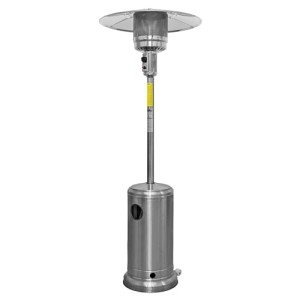20 Tools That Will Make You More Successful At Buy Gas Radiant Heaters
Buying Gas Radiant Heaters: A Comprehensive Guide
Gas radiant heaters have gained appeal over the last few years for their efficiency and ability to offer instant warmth. As more homeowners and organizations search for ways to keep their areas comfy, understanding the features, advantages, and factors to consider when purchasing these heating systems can be very helpful. This post delves into the intricacies of gas radiant heaters, assisting potential buyers in making informed choices.
What are Gas Radiant Heaters?
Gas radiant heaters are devices that make use of propane or gas to discharge heat directly into a room. Rather than heating the air, they warm items and people in their area, providing convenience more quickly and efficiently. These heaters are popular for both indoor and outdoor settings due to their versatility and effectiveness.
Secret Features of Gas Radiant Heaters
- Direct Heating: Unlike traditional heaters that warm the air, gas radiant heaters supply direct heat, making them an efficient choice for rapidly warming up spaces.
- Mobility: Many models are available as portable systems, enabling them to be quickly moved from one place to another.
- Fuel Variety: Gas radiant heaters can be powered by gas or propane, giving users versatility based on schedule and preference.
- Adjustable Settings: Most gas radiant heaters come with adjustable heat settings, allowing users to personalize the level of warmth based on their needs.
Benefits of Gas Radiant Heaters
- Energy Efficiency: These heaters transform gas into heat effectively, leading to lower utility costs compared to electrical heaters.
- Quick Heating: Radiant heat is felt almost right away, making these heaters perfect for unexpected temperature drops.
- Low Maintenance: Gas radiant heaters normally require less upkeep than electric designs, making them a hassle-free choice.
- Ecologically Friendly: When powered by tidy natural gas, these heaters can be a more environmentally sustainable option compared to other heating techniques.
Types of Gas Radiant Heaters
When it pertains to picking a gas radiant heater, it's important to comprehend the various types offered. Below are the most typical options:
- Indoor Gas Radiant Heaters: Designed for indoor areas, these heaters are normally vented or unvented and frequently included built-in security features.
- Outdoor Gas Radiant Heaters: Commonly utilized in patio areas or outdoor dining locations, these heaters are developed to stand up to the elements.
- Wall-Mounted Gas Radiant Heaters: A space-saving choice, these systems are ideal for smaller areas and can be outfitted with different heat outputs depending upon the area's requirements.
- Freestanding Gas Radiant Heaters: These portable models can be used in numerous locations, perfect for those who require versatility.
Buying Guide: How to Choose the Right Gas Radiant Heater
When acquiring a gas radiant heater, numerous elements should be considered to ensure you pick the best model for your space:
1. Heating Capacity
- Measured in BTUs (British Thermal Units), the heater's capacity identifies just how much location it can efficiently warm. Buyers need to examine their particular requirements based on room size.
Space Size (sq feet)
Recommended BTUs (for Gas Radiant Heaters)
100 – 200
5,000 – 10,000 BTUs
200 – 400
10,000 – 20,000 BTUs
400 – 600
20,000 – 30,000 BTUs
600 – 800
30,000+ BTUs
2. Type of Gas
- Think about whether you will be using propane or natural gas, as different heaters cater to different fuel types.
3. Security Features
- Look for designs equipped with safety functions such as automatic shut-off valves, tip-over defense, and oxygen exhaustion sensing units.
4. Setup Requirements
- Some heaters might require expert installation, specifically vented designs. Make sure to think about the expenses and requirements connected with setup.
5. Mobility
- If flexibility is vital, consider portable models that can be quickly moved from one place to another.
Installation and Maintenance
Gas radiant heaters are usually uncomplicated to install, specifically portable models. However, vented options may necessitate expert setup to ensure they fulfill local safety codes.
Upkeep usually involves:
- Regular cleaning to prevent dust accumulation.
- Checking gas connections and fittings for leaks.
- Guaranteeing security features are functional.
Pointer: Regular checks around the system can help extend its life-span and preserve safety.
Often Asked Questions (FAQs)
Q1: Are gas radiant heaters safe for indoor use?A1: Yes
, as long as they are correctly vented and equipped with necessary security functions, they can be securely utilized indoors.
**Q2: Can gas radiant heaters be used in enclosed spaces?A2: Unvented gas heaters can pose dangers in enclosed areas due to prospective suffocation or carbon monoxide gas buildup. Always guarantee adequate ventilation. Q3: How do I know what size heater I need? Outdoor Gas Heaters : The proper size depends on the area you intend to heat. Describe the BTU chart
above to determine your needs. Q4: What is the distinction in between propane and natural gas heaters?A4: The primary distinction depends on their energy source
**; propane is provided by means of tanks, while natural gas is generally piped into homes. Q5: How can I optimize efficiency?A5: Ensure the heater is properly sized for your space, keep it regularly, and think about using it in mix
**with other heating techniques for maximum comfort. Gas radiant heaters can be a terrific addition to any home or service, providing energy-efficient and fast heating solutions. By understanding the different types, functions, and factors to consider
when buying, buyers can make educated decisions that fulfill their heating requires. With the ideal option, these heaters supply comfort, dependability, and an inviting environment throughout chillier seasons.  ******
******